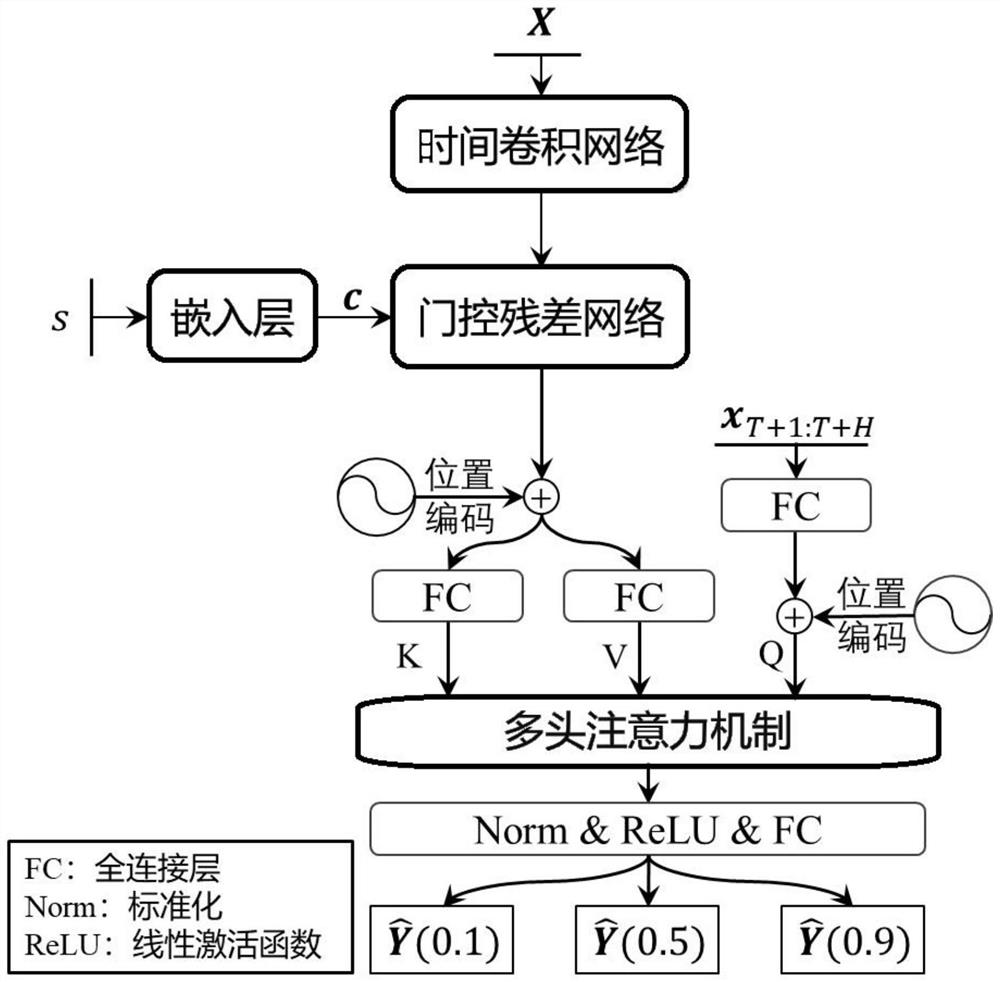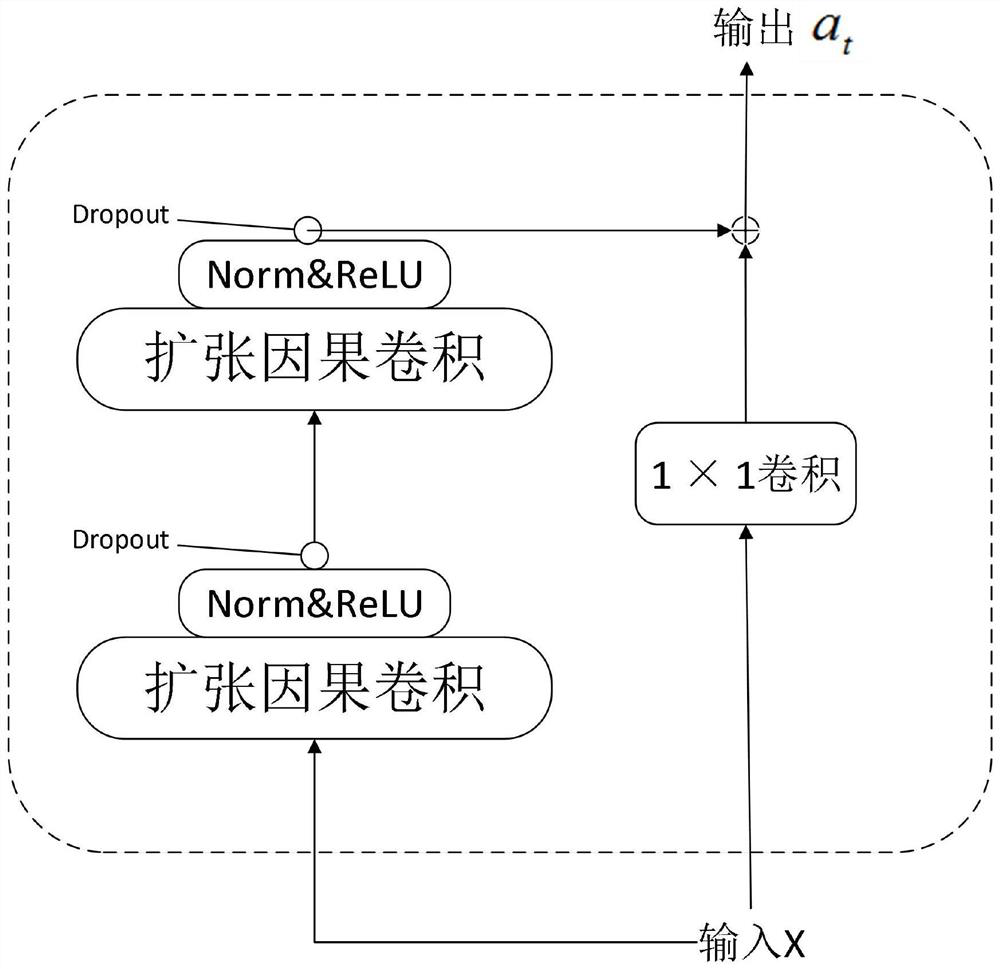Power consumption probability prediction method based on neural network
A probabilistic prediction and neural network technology, applied in the field of neural network-based power consumption probability prediction, can solve problems such as weak ability to capture time series features, unquantifiable prediction results, and inability to simultaneously process power consumption data of multiple users. The effect of improving accuracy and high-precision forecasting
- Summary
- Abstract
- Description
- Claims
- Application Information
AI Technical Summary
Problems solved by technology
Method used
Image
Examples
Embodiment 1
[0065] like Figure 1-Figure 2 As shown, the present invention provides a method for predicting power consumption probability based on a neural network, which specifically includes the following steps:
[0066] S1. Collect historical data of power consumption, divide it into a training set and a test set, and normalize the variables in the historical data.
[0067] S2. Build a neural network model based on a convolutional architecture and a self-attention mechanism.
[0068] S3. Use the processed training set data to train the neural network model, and use the test set to select the model with the best prediction accuracy as the trained neural network model.
[0069] S4: Select recent data of power consumption and perform preprocessing, input the preprocessed recent data into the trained neural network model, and perform inverse normalization on the output value of the model to obtain a probability prediction result.
[0070] Further, in step S1, the historical data of elect...
Embodiment 2
[0114] Based on the above embodiment 1, combined with Figure 2-Figure 4 This embodiment describes the specific content of the neural network model in detail.
[0115] For temporal convolutional network TCN, combining image 3 , in this embodiment, the size of the convolution kernel of the dilated causal convolution is set to 7, and the number of channels of the convolution kernel is 25, that is, the output dimension size after convolution processing is 25, and N is set to 4, that is, the total use of 8 layers of dilated causal convolution. Among them, the expansion factor of the i-th layer of dilated convolution is d=2 i .
[0116] In a specific embodiment, the input data X∈R 4×T , here represents a matrix data with 4 rows and T columns, the number of convolution kernel channels is 25, and the output matrix h∈R is obtained through the calculation of dilated causal convolution 25×T , and then perform the layer normalization operation Norm, and finally use the activation f...
Embodiment 3
[0141] Based on the above Embodiment 1, this embodiment tests the prediction accuracy of the model based on the public data set ElectricityLoadDiagrams20112014, and the prediction task is set to predict the electricity consumption data of the next 24 hours based on the electricity consumption data of the past 168 hours.
[0142] The cleaned dataset contains hourly electricity usage data for 321 users from 2012 to 2014. In this simulation, the data from January 1, 2012 to June 7, 2014 is used as the training set, and the data from June 8, 2014 to December 31, 2014 is used as the test set to verify the prediction accuracy of the model. .
[0143] In order to more intuitively reflect the prediction effect of the model, a sample is randomly selected and its prediction result is visualized, such as Figure 5 As shown, the solid curve represents the true value, and the dashed curve represents the prediction result of the model location The gray range area indicates and The ar...
PUM
 Login to View More
Login to View More Abstract
Description
Claims
Application Information
 Login to View More
Login to View More - R&D
- Intellectual Property
- Life Sciences
- Materials
- Tech Scout
- Unparalleled Data Quality
- Higher Quality Content
- 60% Fewer Hallucinations
Browse by: Latest US Patents, China's latest patents, Technical Efficacy Thesaurus, Application Domain, Technology Topic, Popular Technical Reports.
© 2025 PatSnap. All rights reserved.Legal|Privacy policy|Modern Slavery Act Transparency Statement|Sitemap|About US| Contact US: help@patsnap.com



